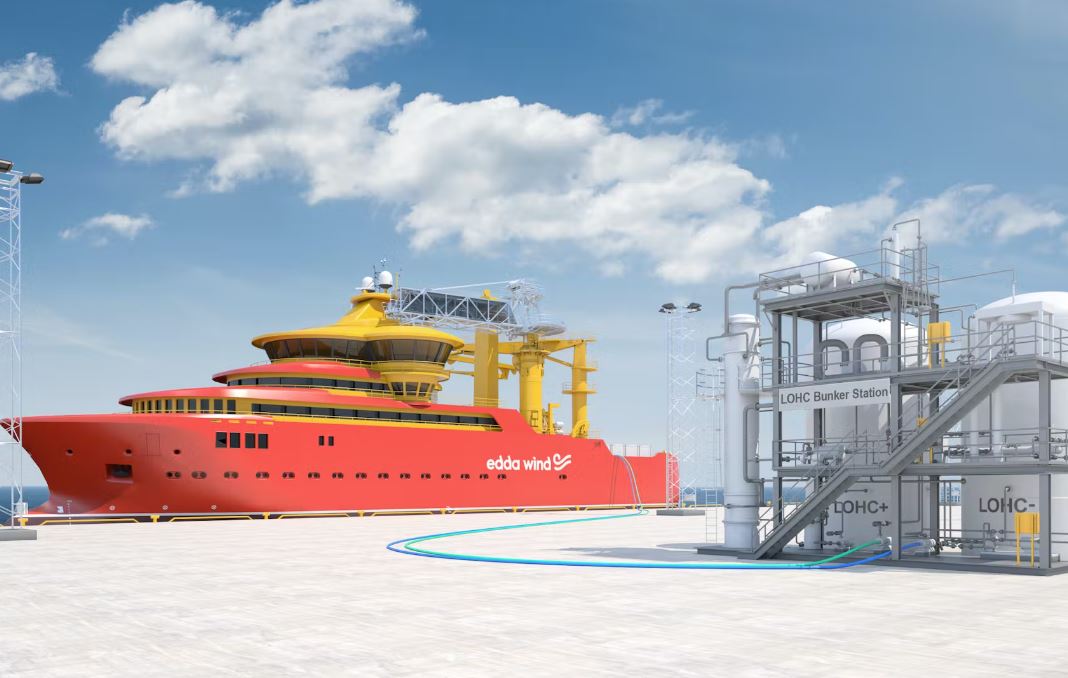Norway – Green hydrogen from a megawatt-scale liquid organic hydrogen carrier (LOHC) will be used in the Ship-aH2oy project to create and test a zero-emission propulsion system on board ships.
The European Climate Infrastructure and Environment Executive Agency (CINEA) informed the consortium of 17 partners that they will receive 15 million euros for a project period of 5 years. The goal is to create a powertrain that combines LOHC and solid oxide fuel cells (SOFC) in a way that outperforms conventional internal combustion engines. The planned LOHC/SOFC powertrain will be shown on one of Edda Wind’s Commissioning/Service Operation Vessels (C/SOV), giving the project a true-lab feel.
The thermal oil benzyl toluene employed as the carrier material in Hydrogenious’ LOHC technology, which has already been demonstrated in stationary systems, allows for the safe and efficient handling of hydrogen under ambient conditions while leveraging existing infrastructure (transport, bunkering, etc). The gaseous hydrogen molecules are bound to and released from the carrier without self-discharge over time in a chemical catalytic process known as hydrogenation and dehydrogenation. Because of the carrier’s intrinsic qualities (non-explosive, rarely flammable, among others), the hazard potential is even lower than for diesel, making it clearly superior to ammonia.
Design for large ships
Hydrogenious LOHC Technologies will be in charge of the intricate design of the LOHC release unit and its integration with the SOFC in Ship-a-H2oy, whereas Hydrogenious LOHC Maritime will communicate with the outside SOFC supplier and manage the introduction and installation of the entire system on the already prepared Edda Wind vessel. As a result, it is planned to develop a scalable system design for larger ships and power plants by merging multiple megawatt LOHC/SOFC modules.
Project objective
The objective is to demonstrate the efficient operation of the onboard power plant utilizing green hydrogen.
Following the successful demonstration of the technology, the Ship-aH2oy partners intend to outfit a number of other vessels with LOHC/SOFC systems. Later in the project’s lifetime, a replication study for the constructed LOHC/SOFC system will be done, making it simple to copy the system in ROPAX and service vessels, among other types of vessels.





